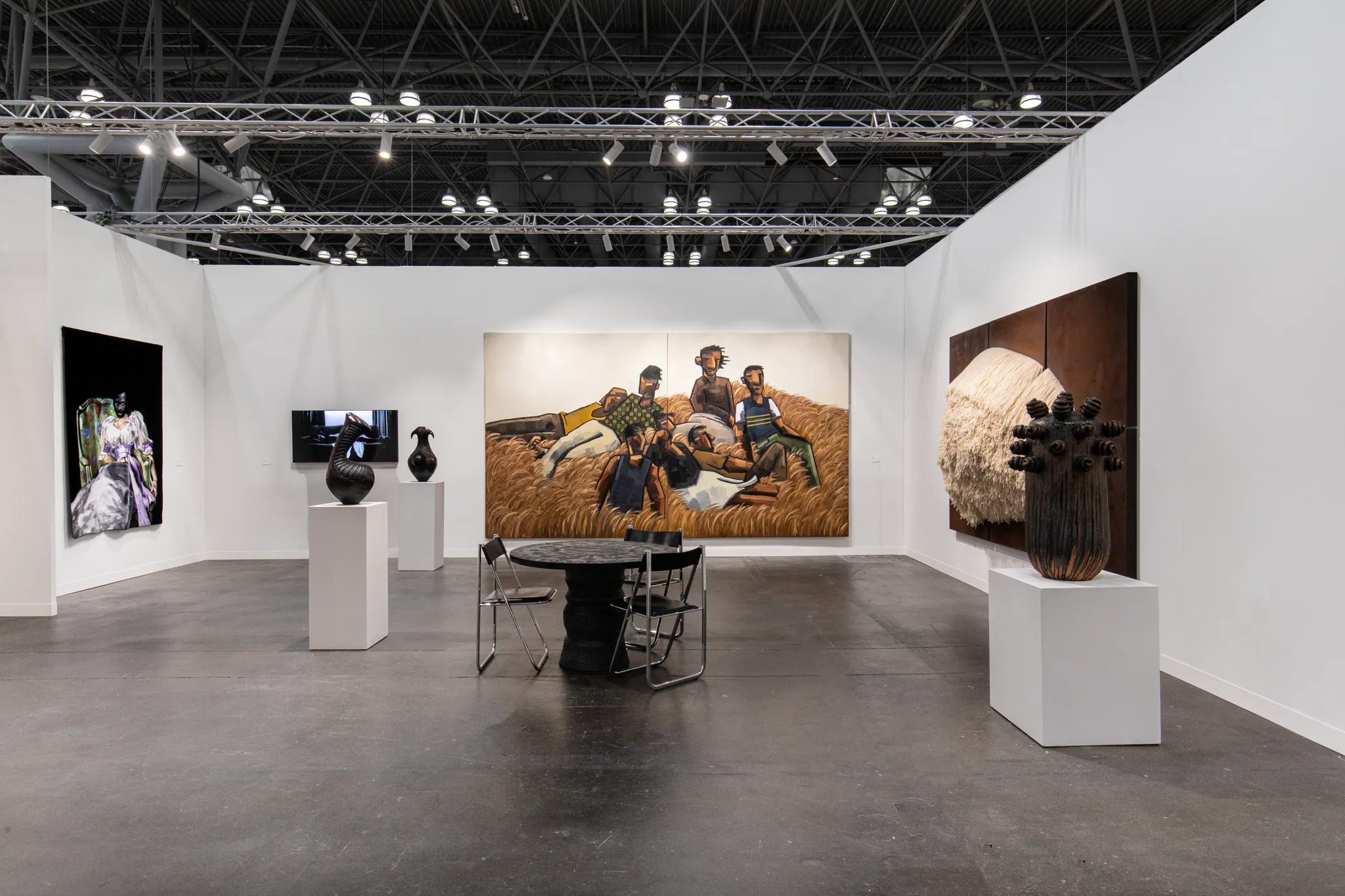Art Militant: The Field, the Body, the Future - Southern Guild at The Armory Show
Booth Photo Credit: Gabriele Abbruzzes
September’s over. In a month that felt like two — my calendar turned into choreography as Armory and NYFW bled into each other with art fairs, gallery openings, fashion productions, press engagements and enough parties to forget my inbox, wellness routine and sleep schedule. One of the most anticipated months of the year it left me both exhilarated and emptied — proof that the cultural circuit runs on stamina as much as vision. Amid the noise and privilege, it was Southern Guild's booth at The Armory that slowed me down — not with excess, but with intention. Their presentation didn’t clamor for attention but instead drew it in quietly and assuredly, grounding the fair’s tumult in a sensibility both ancestral and immediate where material became a stage for revocation and form felt like inheritance.
Southern Guild’s return to The Armory Show this year didn’t just occupy space, it rearranged it. Inside the industrial vastness of the Javits Center, the Cape Town and Los Angeles–based gallery presented a constellation of artists whose work stretched across geography, craft, and the slow pulse of ancestry. As I stood inside the white cube, the air seemed to mirror my stillness. It was measured and expectant, holding a quiet tension that drew me deeper into the work. Southern Guild was up to their usual grandiose aesthetic with massive canvases, contemporary objects that resemble classical African relics and beautifully contrasted photography.
Entering the booth, my eyes and attention was seized by Mmangaliso Nzuza’s Departure II (2025) — a perfect backdrop to the precisely orchestrated performance. The diptych, sprawling across the back wall, depicts a group of figures reclining in wheat-colored fields in a kind of resting resistance. The forms are angular yet softened by the earth-toned palette; the bodies equally holding tension and ease. It’s the kind of painting that silences everything around it, brings people to a standstill and invokes reflection. As I moved closer, the strokes became rhythmic. The subtle frequency of human restraint of people who have known both labor and grace.
Amine Installation Photo Courtesy: Southern Guild
To its right, Amine El Gotaibi’s The Mountain Rock (2025) corten steel sheathed in cascading wool — anchored the booth in elemental dialogue. The piece carried a quiet force, evoking both erosion and renewal. The canvas’ frontality suggests From certain angles, it resembled a landform Together, Nzuza and El Gotaibi framed the booth as both ground and threshold: painting as witness and sculpture as terrain.
Around them, the presentation expanded in tone and texture as Zanele Muholi’s luminous portraits from their “Somnyama Ngonyama” series glowed with clarity, each gaze resisting erasure. Zizipho Poswa’s dark ceramic forms stood as living vessels, honoring the hair traditions of Black womanhood, presenting objects with Bantu coded impressions. Manyaku Mashilo’s ochre-coated figures spoke on behalf of the register of inheritance — daughters, mothers, and matriarchs sharing a silent script that stretched beyond language.
But what struck me most wasn’t any single work or artist; it was how the Southern Guild arranged conversation through proximity. Every material carried its own syntax. The exhibition showed range placing clay beside wool and paint beside steel, but together they spoke of shared memory, of place as both metaphor and evidence. The booth didn’t shout for attention; it breathed. In a fair often driven by spectacle, this felt like a reprieve — an offering, a grounding.
Southern Guild’s strength lies in this quiet insistence that African contemporary art need not announce its relevance. It already is the center. Through its transcontinental program (one that spans from Cape Town to Los Angeles), the gallery continues to bridge worlds while refusing the flattening gaze of global curiosity. Here, the work does the speaking, unhurried and unyielding.
Walking away, I kept thinking about that field in Nzuza’s painting — the figures resting in gold light, their arrangement carrying centuries of compassion, community and existence. That’s what this presentation achieved: not just visibility, but recognition. A reminder that belonging is not found through arrival but through return.


.webp)
